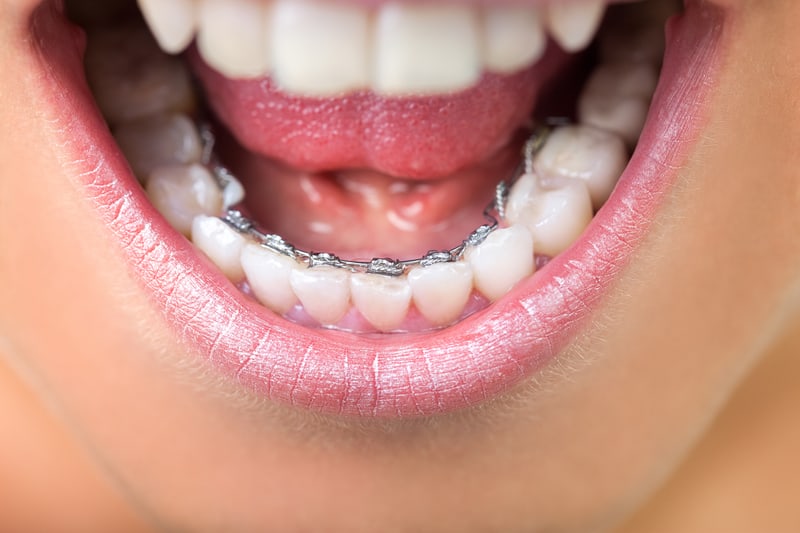 Lingual braces, also known as hidden braces, are an innovative type of orthodontic treatment that is becoming increasingly popular among adults and teenagers. Unlike traditional braces that are placed on the front surface of the teeth, lingual braces are placed on the back surface, making them virtually invisible.
Lingual braces, also known as hidden braces, are an innovative type of orthodontic treatment that is becoming increasingly popular among adults and teenagers. Unlike traditional braces that are placed on the front surface of the teeth, lingual braces are placed on the back surface, making them virtually invisible.
Dr. Picard, a leading orthodontist in Ottawa, recommends lingual braces for patients who want a discreet way to straighten their teeth. These braces are custom-made to fit the unique shape of each patient’s teeth, ensuring maximum comfort and effectiveness.
One of the main advantages of the invisible braces is their discreet appearance. They are virtually invisible from the outside, which makes them an excellent choice for people who want to straighten their teeth without drawing attention to their braces. This is particularly important for adults who may feel self-conscious about wearing traditional braces.
According to Health Line, “…For image-conscious teenagers, working professionals, and others who don’t want to draw extra attention to their dental work in progress, lots of nearly invisible options are available. And their popularity is growing…Lingual braces have the same components as conventional braces, but they’re fixed to the back of your teeth, on the tongue — or lingual — side of the teeth. Because they’re behind your teeth, they’re nearly invisible.”
Another advantage of lingual braces is their effectiveness. They are just as effective as traditional braces in treating a wide range of orthodontic issues, including crowded teeth, gaps, and bite problems. Dr. Picard has found that lingual braces can often achieve results faster than traditional braces, making them a great choice for patients who want to see quick progress.
Furthermore very comfy to wear are lingual braces. They are less likely to irritate or hurt patients than conventional braces since they are manufactured specifically to fit each patient’s teeth. Another benefit for patients is that they do not obstruct speech or eating.
Dr. Picard and his team at Braces in Ottawa have extensive experience in fitting and adjusting lingual braces. They use the latest techniques and technologies to ensure that each patient receives the best possible treatment. They also provide ongoing support and guidance throughout the treatment process, helping patients to achieve their desired results.
Are you a good candidate for lingual braces?
Consultation with your orthodontist is the only way to know for sure if lingual braces are right for you. These hidden braces, in general, can correct the same types of alignment issues as conventional (buccal) braces.
A 2016 review of the research found that these braces met the treatment goals that patients and doctors had set for themselves.
However, lingual braces are not for everyone. Patients with very deep overbites, for example, may experience brackets popping off more frequently.
Your orthodontist will examine your teeth and discuss which treatment options are most likely to work well for you during your first appointment. If you want to get lingual braces, talk to your orthodontist early on because not all orthodontists are trained to use them.
Advantages of Lingual Braces
Invisibility. Braces’ components — brackets, wires, and elastic bands — are all attached to the back of your teeth. Unless you open your mouth wide, no one can see them.
Possibly less pain. Studies differ on this point, but these hidden braces appear to be the most effective.
In a study of 130 adults wearing various types of orthodontic appliances, researchers discovered that those who wore lingual braces experienced the least pain during their first month of treatment.
Conclusion
Lingual braces are a discreet, effective, and comfortable way to straighten your teeth. If you are interested in lingual braces, we highly recommend that you schedule a consultation with Dr. Picard at Braces in Ottawa. With their expertise and personalized care, you can achieve a beautiful, healthy smile that you can be proud of.
Click here to learn about the 4 types of braces and aligners you can choose

